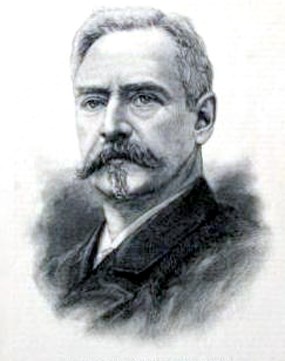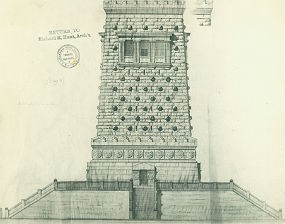
National Park Service, Statue of Liberty NM Born on October 31, 1828 in Brattleboro, Vermont, architect Richard Morris Hunt designed the Statue of Liberty's pedestal on commission from the American Committee for the Statue of Liberty. Two years of work, and numerous rejected proposals by both Hunt and Auguste Bartholdi, preceded Hunt's final version of 1884. Hunt's granite pedestal became an architectural monument in its own right, yet exists in harmony with the colossus above it. Bartholdi initially saw the pedestal as a high "Fortress of Liberty." He later considered other forms - including a stepped pyramid - and shared these ideas with Hunt. From 1882 to 1884, Hunt experimented with numerous models of his own. His "Pharos I" design combined Bartholdi's "Fortress" with elements of the ancient lighthouse at Alexandria. A tight budget, however, forced him to reduce this imposing version from 114 feet (34.8 meters) to 87 feet (27.4 meters). For his work, Hunt received a sum of 1,000 dollars which he donated to the American Committee to help fund the Statue. 
NATIONAL PARK SERVICE, STATUE OF LIBERTY NM Hunt was the first American to attend the École des Beaux-Arts in Paris. His other works include the New York Tribune Building, the Lenox Library, and the Administration Building of the World's Columbian Exposition in Chicago. He was a member of the Union League (a group of people dedicated to the early Republican Party, the Union's cause in the American Civil War, and the abolition of slavery) and founded the American Institute for Architects in 1857 (for which he served as the first secretary). Hunt died on July 31, 1895 in Newport, Rhode Island. 
National Park Service, Statue of Liberty NM |
Last updated: June 7, 2018
